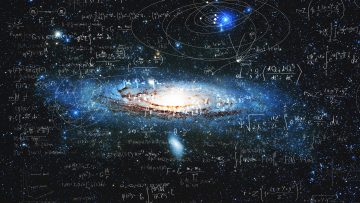If there’s one thing big-budget Hollywood disaster films have taught us, it’s that the Earth’s poles are nothing to be messed with. But apocalyptic fiction aside, scientists have been tracking the movement of Earth’s poles for well over a century, and they never stay put.
In what might seem like an alarming bulletin, scientists from the National Centers For Environmental Information have issued an update that reveals the new location of Earth’s north magnetic pole. The update is actually an “out-of-cycle” event, meaning that it had to be done sooner than planned do to the rapid shifting of the pole’s location.
That all sounds pretty scary, but it’s actually not as big of a deal as you might think.
As kids we grow up with a pretty vague understanding of the relationship between what we consider “north” and what Earth’s magnetic field tells us is actually north. Geographic north, which is a straight line between wherever you are on the planet and the (geographic) North Pole, doesn’t actually point at the north magnetic pole at all.
It’s a bit confusing, but the north pole as far as the Earth’s magnetic field is concerned is a constantly-shifting point that has gradually moved along a relatively straight path from Canada towards the Arctic Circle since scientists began to reliably track its position in the early 1900s.
Normally, scientists issue updates to the location of magnetic north every five years, with the next scheduled update expected to happen by the end of 2019. However, the pole is moving faster than researchers expected, and it the most up-to-date location information was simply too inaccurate to allow it to remain on the books without an update. Hence, an out-of-cycle update was issued.
At present, the north magnetic pole is headed for Russia, and it shows no signs of slowing down. Scientists may not know exactly why the pole is moving the way it is, but that’s not a new development. Mankind has been studying the Earth’s magnetic field for a long time, but we still know relatively little about what forces deep within the Earth affect it.
Some scientists believe that the movement of the poles may be hinting at an upcoming polar flip. Earth’s poles have flipped many times in the past, and we may already be overdue for one. There are plenty of theories of what might be in store for humanity if that happens, but we won’t know for sure until we see it for ourselves.







